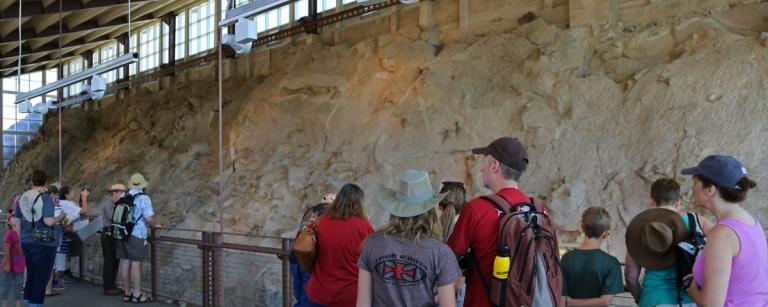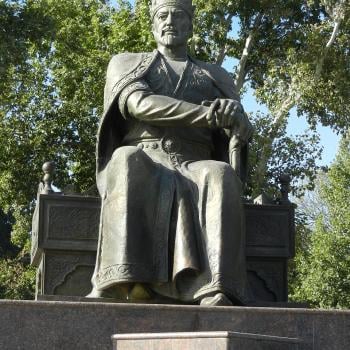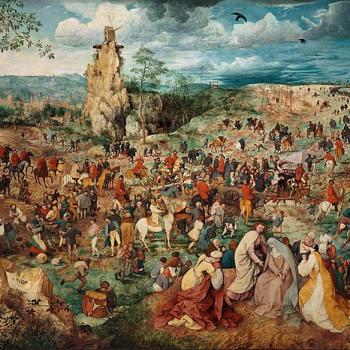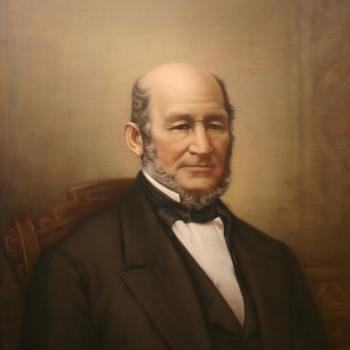
On our way home this afternoon, we stopped by the fossil quarry at Dinosaur National Monument, not far from Vernal, Utah. Approximately 1,500 dinosaur bones are embedded in a “wall” there in the Quarry Exhibit Hall. Remains of various species are represented, including the thirty- to forty-foot-tall Allosaurus, dominant predator of its era; the giant sauropods Apatosaurus, Camarasaurus, and Diplodocus; and Stegosaurus. (Camarasaurus is the most common dinosaur species found in the park.) .
The “wall” is a layer of rock — sandstone and conglomerate — that was once, 149-150 million years ago during the late Jurassic period, an alluvial area or river bed belonging to what is now called the Morrison Formation. The remains of dinosaurs that died (perhaps during a drought) were carried by the river until they were deposited just slightly north of today’s Jensen, Utah. The sediments laid down by the river and in which the dinosaur remains were entombed were slowly buried and then, under enormous pressure, “lithified.” That is, they were turned into solid rock. After that, these rocks were lifted up and tilted to their current angle by the forces that also created the Uinta Mountains. But then erosion stripped the sedimentary layers down and, by good fortune, exposed the layer containing the fossils. In the late nineteenth century, local Jensen farmers began to find huge and very strange bones as they were plowing their fields. By 1909, paleontologists from the Carnegie Museum in Pittsburgh, Pennsylvania, were working in the quarry site.
I can only assume that this was all very disturbing to me. After all, I’ve been told repeatedly by anonymous internet critics who’ve never met me that I’m a young-earth creationist who believes our planet to be only a few thousand years old. So I must have been very bothered by these dinosaur fossils, and to be told that they’re 150 million years old must have been deeply shocking. Of course, I was very likely already reeling from our visit to Rocky Mountain National Park, where the volcanic Never Summer Mountains are claimed to be nearly 30 million years old. And the Never Summers are practically newborns compared to the oldest rocks in the Park, which are dated to between 1.7 billion and 1.8 billion years before the present.
One of my critics has recently been claiming that a principal theme of this blog is The Evils of Science. In that light, it should come as no surprise to me or to others that I very likely regard all of these alleged dates as lies told by wicked and satanic “scientists” as part of their war against God. Or something of that sort. There are so many things that one can learn online!












